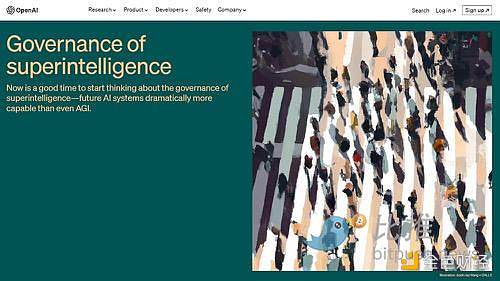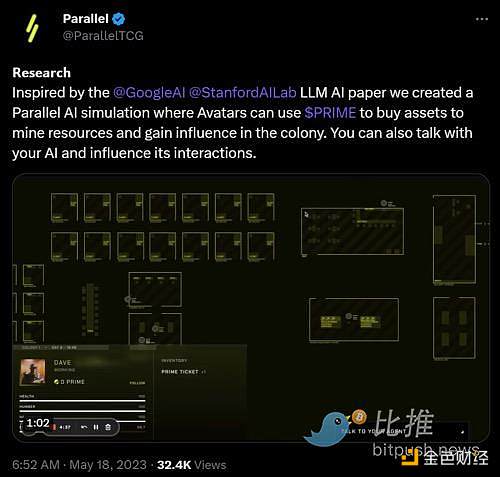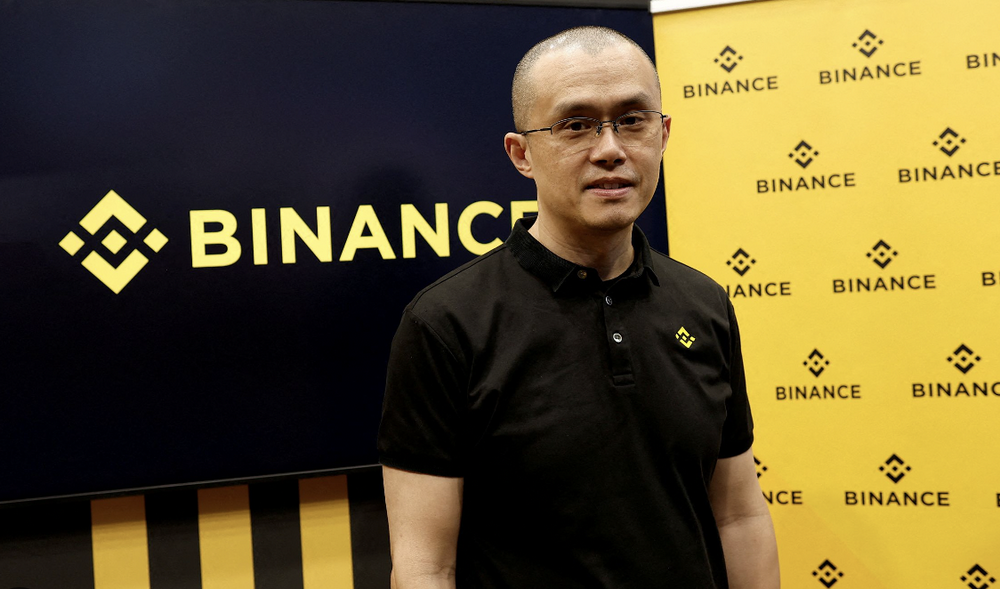How can AI integrate with cryptography to drive the next wave of innovation and growth in Web3?
How can AI and cryptography drive innovation and growth in Web3?Author: Bankless Translation: Mary Liu, BlockingBitpushNews
For the past few months, artificial intelligence (AI) has been sweeping through the technology industry, and even cryptocurrency-focused venture capitalists have caught wind of the opportunity. While some AI junk coins have indeed emerged, is the combination of AI and Crypto really an opportunity? We have been looking for answers.
With just a few lines of text prompts, artificial intelligence, with its incredible creativity and thinking, is touted as “disrupting” many fields. So what does this groundbreaking rise mean for crypto? Bullish or bearish?
Well, remember that while the AI space will certainly get hotter, AI and cryptocurrency have already begun to fuse in unprecedented ways. In this article, let’s explore the far-reaching relationship between AI and cryptocurrency, and how these connections are driving the next wave of innovation and growth in the web3 field.
- Weekly Preview | Hong Kong to Implement Virtual Asset Regulations Starting June 1; OP, 1inch Unlock Tokens Worth Millions of Dollars
- Variant Partner: Web3 social networks will succeed by adopting asset-first approach
- Deep Panda DAO’s new way out: Closing down is more profitable than struggling to survive
Public AI Tools with Token Governance
ChatGPT, a chatbot service, is a wonder of human engineering, but its codebase is owned by OpenAI, a private company.
That’s fair. However, in the crypto world, many of us strongly support open-source building and public product software, so it can be said without exaggeration that many of us also believe that we should open-source and publicly supplement private AI services.
It can be said without exaggeration that we are moving towards decentralized autonomous organizations (DAOs) that use their own decentralized computing markets (such as Golem network) and ERC-20 utility/governance tokens to train and manage a public AI model.

In other words, DAOs can incentivize continuous contributions of computing resources to model training by rewarding contributors with tokens. The complexity of AI training can be reduced by attracting skilled contributors with token rewards, while using token voting to decide on key decisions related to training or to formulate ethical and legal guidelines for governance.
There is no doubt that this “tokenizing AI” approach could be fraught with absurdity and danger. However, if executed properly, it can enable DAOs to train and manage a complex AI in an open, decentralized manner. If these AI tokens do indeed emerge, the accompanying trading activity could be massive. This is bullish for cryptocurrency.
Highly Intelligent Smart Contracts
Last week, Accelxr published an article outlining the potential of integrating machine learning (ML), a subfield of artificial intelligence that helps computers understand data and make predictions based on that data, with zkSNARKs to create smart contracts that are more complex and intelligent. The idea is that adding “zkML” capabilities to smart contracts would allow them to evolve into more automated and dynamic systems that can make decisions based on real-time on-chain data rather than static code written at the time of their initial programming!
The potential use cases here are broad and diverse, but let’s focus on the DeFi space as an example. Projects could use zkML solutions to facilitate AI-optimized automated yield strategies, which you could call super liquidity mining if you like. zkML could also be used to automatically update parameters for DeFi protocols in real time, such as when a lending protocol needs to respond to a sudden liquidation crisis. And there may one day be zkML-powered oracles that sign off-chain data and feed it into DeFi, such as to insurance protocol contracts. This is good news for DeFi and for cryptocurrencies.
Authenticity Verification
“… AI will create an explosive growth in images, audio, and software. It will be hard to distinguish what’s real from what’s not. In this context, defenses against fraud, deepfakes, plagiarism, and verifying creators/authors/people you’re speaking with will be important. Public key/private key cryptography, zk-proofs, etc. can play an important role…” –Bitwise CEO Hunter Horsley
The above quote from Horsley accurately predicts the upcoming surge of AI-generated media. In audio, text, video, and other visual content, AI levels the playing field between novices and experts like never before. This new reality also means that it’s easier than ever to fabricate reality with AI-generated content.
Looking ahead, as Horsley says, there is a rise in projects like people signing content with their public ENS names to “notarize authenticity” as the need for public verification increases, which is good news for cryptocurrencies.
The AI-generated content boom
On the other side of the AI-driven content explosion is the fact that AI makes it easier for anyone to become a content creator, or at least a more effective content creator, especially those who are not from a technical background.
Here’s a thought-provoking point, in a film context, the “auteur” is the director whose vision and control over a film is so unique that they are considered the author of that film, not just the leader. Now, AI is pushing all of us towards auteur status in our ordinary creative efforts, as it empowers us to prepare audio, text, video, and other content in ways that are individual and comfortable.
For example, with just an idea, some time, and determination, you can now create and code an NFT project from scratch as a non-technical creator using the ChatGPT plugin + Stable Diffusion combo. Eliminating the friction of creating and launching projects will drive more project activity, just as the internet has evolved over time.
Of course, it’s not just independent NFT creators that can benefit greatly from AI here, any group involved in creative work will do so, such as animation studios or metaverse projects or web3 gaming companies. For example, the team behind NFT-based sci-fi card game maker Blockingrallel is already exploring potential ways to enhance its game ecosystem through AI-based agents.
With the emergence of new types of content generation, more such experiments are expected in the coming months and years. This is bullish for crypto.

The big idea
The fusion of artificial intelligence and cryptocurrency is not only a possibility but a reality that is garnering attention and bringing tremendous potential to the web3 space.
Integrating AI into decentralized systems can fundamentally change everything from content authentication to smart contracts, and now these intersections all point to a more optimistic future for cryptocurrency. Our ecosystem is undergoing a major wave of transformation, one that will make magical internet money even more magical!
We will continue to update Blocking; if you have any questions or suggestions, please contact us!
Was this article helpful?
93 out of 132 found this helpful
Related articles
- Xiyou Cong: Have you prepared for the next wave of hype narrative after Brc20?
- a16z Crypto CTO: Protocol Design is More Important than Token Economics
- One year after the Terra-Luna reset: Rebuilding Trust, centralized exchanges will continue to exist
- Inventory of a16z’s Q1 Investment Layout
- Hourglass: What is a time-bound token?
- Nike Embraces NFT Marketing: What Lessons Can Other Companies Entering Web3 Learn?
- What is “Onion Routing” in the Lightning Network and how does it work?





